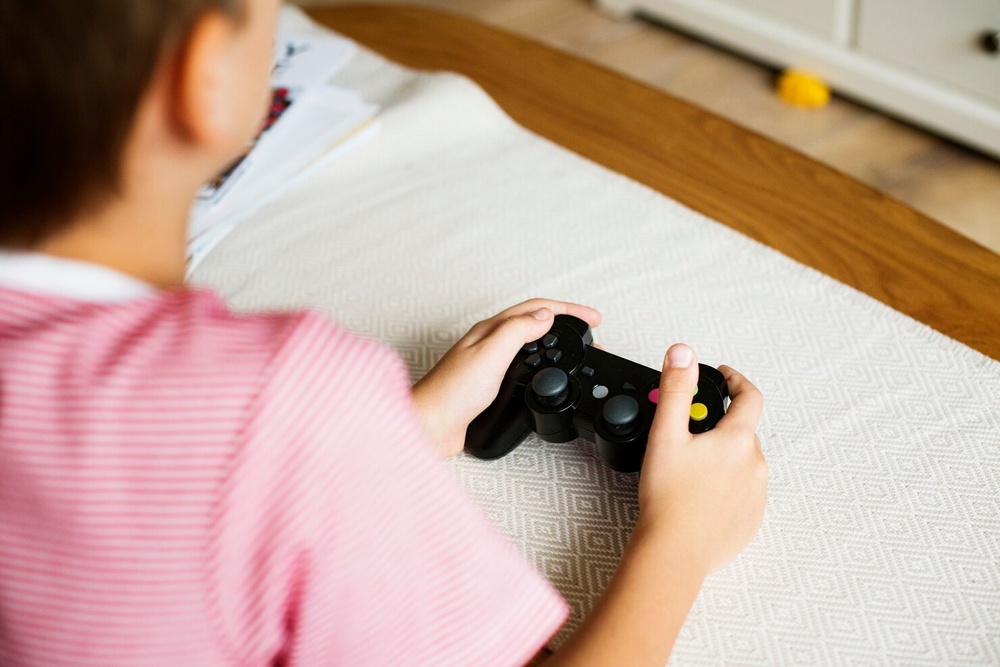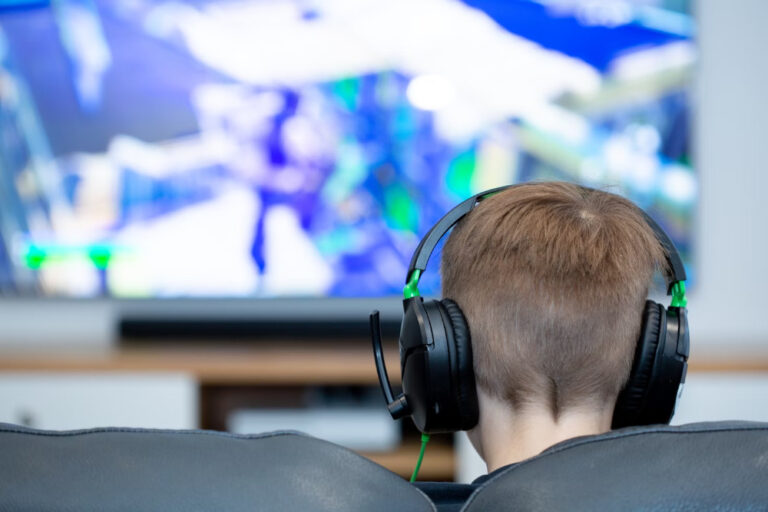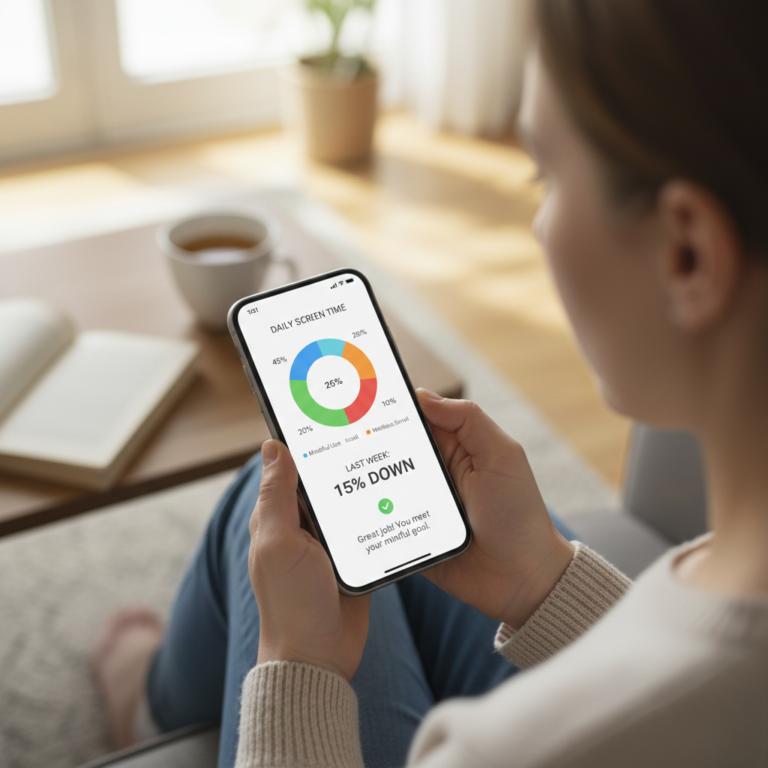
Is the glow of the screen replacing the light in your child’s eyes? Do family dinners feel like solo meals eaten in the same room? If you’re watching your child disappear into the world of online gaming—losing sleep, letting grades slip, and becoming irritable when away from the console—you’re not alone, and you’re right to be concerned. The constant pull of virtual worlds can feel overwhelming, leaving parents feeling helpless. But what if you could reclaim your child and reconnect as a family in just 30 days?
This post isn’t just another list of screen time tips. We’re diving deep into a structured Digital Detox Challenge specifically designed to address kids’ gaming addiction. You’ll learn the warning signs, understand the psychology behind excessive gaming, and most importantly, get a step-by-step, actionable 30-day plan that one family used (and yours can too!) to break the cycle, rediscover real-world joy, and rebuild stronger connections. Get ready to swap screen battles for genuine family breakthroughs.

Understanding the Grip: Why Kids Get Hooked on Gaming
Before tackling the challenge, let’s understand why these games are so captivating, especially for young minds. It’s not simply a lack of willpower. Modern games are masterfully designed using sophisticated psychological principles to keep players engaged.
Think about it: games offer constant rewards (loot boxes, level-ups, new skins), social connection (team chats, guilds), a sense of competence (mastering difficult levels), and autonomy (choosing quests, customizing characters). These elements tap directly into fundamental human needs. Critically, they trigger the brain’s reward system, releasing dopamine—the same neurotransmitter involved in pleasure and addiction. Every small victory, every notification, every completed quest delivers a tiny hit, creating a compelling feedback loop. It’s like a digital slot machine, but infinitely more complex and personalized.
Furthermore, games offer an escape. For kids struggling with social anxiety, school pressures, or difficult emotions, the virtual world can feel like a safe haven where they are powerful, successful, and accepted. Recognizing these powerful hooks isn’t about blaming game designers; it’s about understanding the strength of the pull your child is experiencing. This empathy is crucial before initiating change. Does this sound familiar in your home?
Is It Really Addiction? Recognizing the Warning Signs in Your Child
Not all gaming is problematic. Many kids enjoy games as a balanced part of their lives. But how do you know when healthy enthusiasm crosses the line into something more concerning, potentially escalating towards what the World Health Organization classifies as “Gaming Disorder”? It’s less about the hours spent (though excessive time is a factor) and more about the impact on their life.
Here are key warning signs that suggest a digital detox challenge for kids gaming addiction might be necessary:
- Loss of Control: Unable to stick to agreed-upon time limits; sneaking extra gaming time; intense agitation or anger when asked to stop.
- Preoccupation: Constantly thinking or talking about gaming, even when doing other activities; planning the next gaming session.
- Neglecting Responsibilities: Declining grades; incomplete homework; neglecting chores; skipping extracurricular activities or social events to game.
- Social Withdrawal: Preferring gaming over spending time with family or friends offline; losing interest in previous hobbies.
- Deception: Lying about the amount of time spent gaming or the types of games played.
- Negative Emotional Changes: Increased irritability, anxiety, or depression, especially when unable to game; using gaming primarily to escape negative moods.
- Physical Symptoms: Eye strain, headaches, neglecting personal hygiene, changes in sleep patterns (staying up late or waking early to game), poor nutrition (skipping meals or eating quick snacks at the screen).
- Continuing Despite Consequences: Persisting with excessive gaming even when aware of the negative impacts on school, relationships, or health.
If you’re ticking several boxes on this list, it’s a clear signal that intervention is needed. Ignoring these signs won’t make them disappear. A structured detox can be the circuit breaker your family needs.
Preparing for the Digital Detox Challenge: Kids Gaming Addiction Reset
Okay, you’ve recognized the signs and understand the pull. Now comes the crucial preparation phase for the Digital Detox Challenge focused on kids’ gaming addiction. Simply announcing a ban out of the blue is a recipe for conflict. Thoughtful preparation sets the stage for success and cooperation. This phase is all about alignment, planning, and setting clear expectations.
Key Preparation Steps:
- The Family Summit: Schedule a dedicated time to talk, not during a conflict about gaming. Choose a calm moment.
- Share Concerns, Not Accusations: Use “I” statements (e.g., “I’m concerned about how tired you seem,” “I miss spending time together doing other things”) rather than “You” statements (“You’re always gaming!”).
- Explain the Why: Focus on the positive goals: better sleep, more energy, improved focus, rediscovering other fun activities, stronger family bonds. Frame the 30-day challenge as a family experiment to reset habits and feel better together.
- Listen & Validate: Allow your child to express their feelings, even if it’s resistance or anger. Acknowledge that this will be hard (“I understand this feels unfair/difficult, and that you enjoy gaming”). Empathy is key.
- Get Input (Where Possible): While the core goal (reducing/eliminating gaming for 30 days) might be non-negotiable, involve them in planning alternatives. What else would they like to do? This fosters a sense of agency.
- Define the Rules Explicitly: What does “detox” mean?
- No ambiguity: Is it zero gaming? What about school-required screen time? YouTube related to hobbies? Define the boundaries clearly and write them down. For a true reset, eliminating recreational gaming entirely for the period is often most effective.
- Parental Commitment: What screen time changes will parents make to model behavior and show solidarity? (e.g., No phones at dinner, less scrolling in the evenings).
- Set Realistic Goals & Expectations:
- Discuss what success looks like after the 30 days (e.g., balanced gaming on weekends only, finding a new hobby).
- Prepare for pushback, boredom, and withdrawal symptoms (irritability, mood swings). Discuss how the family will support each other through tough moments.
- Prepare the Environment & Alternatives:
- Remove Temptations: Uninstall games, pack away consoles/controllers (out of sight!), potentially change Wi-Fi passwords temporarily if needed.
- Stock Up on Alternatives: This is critical. Have board games, books, art supplies, sports equipment, puzzles readily available.
- Plan Activities: Brainstorm a list together of non-screen activities for evenings and weekends. Schedule some specific family outings or events during the 30 days.
“Success in a digital detox isn’t just about removing the negative; it’s about intentionally adding the positive.” (Tweetable quote idea)
The 30-Day Detox Blueprint: Step-by-Step Execution
With preparation complete, it’s time to launch the 30-day challenge. Remember, consistency and empathy are your guiding principles. This isn’t punishment; it’s a path to reconnection and healthier habits.
Week 1: The Adjustment Period (Days 1-7)
- Day 1 Launch: Start strong. Implement the agreed-upon rules immediately. Be prepared for initial resistance or testing of boundaries. Stay calm but firm.
- Focus Heavily on Alternatives: The first few days are crucial for replacing gaming time. Immediately engage in planned activities. Make family time non-negotiable (e.g., device-free dinner, a board game).
- Acknowledge Withdrawal: Expect irritability, boredom, and complaints. Validate these feelings (“I know this is hard,” “It’s okay to feel bored right now”) without giving in. Redirect energy towards the alternative activities list.
- Prioritize Sleep: Ensure a consistent bedtime routine, free from screens in the bedroom, to help reset natural sleep cycles often disrupted by gaming.
Week 2: Finding a New Rhythm (Days 8-14)
- Establish Routines: By now, new patterns should start emerging. Stick to the scheduled activities and tech-free times. Consistency builds new habits.
- Encourage Exploration: Prompt your child to try new things from the alternatives list or discover new interests. Sign up for a trial class, visit the library, start a creative project.
- Check-In Regularly: Have brief, informal chats. “How are you feeling about the challenge this week?” “What’s been the best part so far?” “What’s still tricky?” Adjust plans if needed based on feedback.
- Positive Reinforcement: Notice and praise effort, positive attitude shifts, and engagement in non-gaming activities. “I loved seeing you enjoy drawing yesterday!” “You handled that boring moment really well by picking up a book.”
Week 3: Deepening Engagement (Days 15-21)
- Introduce More Independence (Within Limits): Encourage your child to initiate non-screen activities themselves.
- Focus on Skill Building: Help them find satisfaction in real-world accomplishments – learning a new song on an instrument, improving at a sport, completing a complex puzzle or project.
- Reinforce Benefits: Point out positive changes you’ve observed: “Have you noticed you seem less tired in the mornings?” “It feels like we’re laughing together more, doesn’t it?”
- Address Lingering Boredom: If boredom remains a major issue, brainstorm more engaging or challenging alternatives. Perhaps involve their friends in non-screen activities (playdates, sports).
Week 4: Solidifying Habits & Planning Ahead (Days 22-30)
- Maintain Consistency: Don’t let fatigue set in. Stick to the plan through the final week.
- Reflect on the Experience: Start conversations about what they’ve learned, what they’ve enjoyed instead of gaming, and how they feel overall compared to before the challenge.
- Begin Discussing Reintegration: Talk about what happens after Day 30. This isn’t about going back to the old ways, but establishing a new, balanced approach. What will the new rules for gaming look like?
- Celebrate Success: Plan a small family celebration for completing the 30-day challenge, focusing on the effort and positive changes, not rewarding with screen time.
This blueprint provides structure, but be flexible. The core idea is replacing the unhealthy habit with positive connection and activity, consistently, for 30 days to allow the brain and behaviors to reset.
Beyond the 30 Days: Building Sustainable Healthy Tech Habits
Completing the 30-day digital detox challenge for kids gaming addiction is a major victory, but it’s the beginning, not the end. The goal now is to integrate technology, including gaming, back into life in a healthy, balanced way, preserving the gains made. Relapsing into old habits is easy if you don’t have a clear plan for the future.
Strategies for Long-Term Balance:
- The New Tech Agreement: Based on the detox experience and reflections, create a new family media plan. This should be even more specific than the detox rules:
- Clear Time Limits: Define exactly how much gaming time is allowed (e.g., 1 hour on Saturday and Sunday afternoons). Use timers!
- Specific Times/Days: When is gaming permitted? Perhaps only on weekends, or after homework and chores are done.
- Tech-Free Zones/Times: Continue enforcing rules like no devices in bedrooms overnight and device-free meals. These are crucial for sleep and connection.
- Content Rules: Discuss age-appropriate games and online safety.
- Consequences: What happens if the rules are broken? Agree on this beforehand.
- Prioritize Real Life: Ensure that gaming always comes after essential activities: homework, chores, family time, physical activity, adequate sleep, and face-to-face social interaction. Gaming should be a privilege earned after responsibilities are met, not an automatic right.
- Continue Alternative Activities: Don’t let the momentum fade. Keep encouraging and making time for the hobbies and activities discovered or rediscovered during the detox. Make them a regular part of the family schedule.
- Ongoing Communication: Keep the dialogue open. Regularly check in on how the balance feels. Is the plan working? Does it need adjustment? Be prepared to revisit the agreement as circumstances change (e.g., holidays, school workload).
- Empower Self-Regulation: As kids mature, the goal shifts towards them learning to manage their own tech use. Discuss strategies like setting personal timers, recognizing signs of overuse in themselves, and making conscious choices about how they spend their time.
Think of it like maintaining a healthy diet after a cleanse. You don’t immediately go back to eating junk food 24/7. You integrate healthy choices consciously, allowing occasional treats within a balanced framework.
Parental Role-Modeling: Why Your Screen Habits Matter More Than You Think
Throughout this process, one factor consistently emerges as critical: your relationship with technology. Kids are astute observers. If you preach screen limits while constantly scrolling through your phone or glued to your laptop, the message is diluted, even hypocritical. Participating in the digital detox challenge for kids gaming addiction isn’t just about managing their screens; it’s a chance to evaluate your own.
Consider these points:
- “Do as I Say, Not as I Do” Doesn’t Work: Children learn more from what they see than what they’re told. If you want them to value face-to-face conversation, put your phone away during interactions. If you want them to read books, let them see you reading.
- Mindful vs. Mindless Use: Demonstrate using technology purposefully (checking directions, looking up information, connecting briefly) versus mindless scrolling or constant notifications.
- Presence Over Presents: Your focused attention is one of the most valuable gifts you can give your child. Being mentally present, without the distraction of a screen, strengthens your bond immeasurably.
- Shared Tech-Free Time: Implementing family-wide rules (like device-free dinners or evenings) shows solidarity and makes it feel less like the child is being singled out.
This isn’t about parental perfection. It’s about awareness and intention. Use the 30-day challenge as an opportunity for your own digital reflection. Small changes in your habits can have a surprisingly large impact on your children’s perception and behavior. What one change could you make to your own screen habits starting today?
Troubleshooting & When to Seek Professional Help
Embarking on a digital detox, especially for entrenched gaming habits, won’t always be smooth sailing. Anticipating challenges and knowing when to seek outside help is crucial.
Common Roadblocks & Solutions:
- Intense Resistance/Anger: Expected, especially initially. Stay calm, firm, and consistent with the agreed-upon rules. Reiterate the ‘why’ and validate their feelings without giving in. Ensure you’re providing engaging alternatives.
- Persistent Boredom: Double down on planning engaging activities. Involve your child more in choosing what they want to do. Sometimes, allowing for some unstructured boredom is okay – it can spark creativity.
- Sneaking Game Time: This signals the rules might need tightening (e.g., removing devices physically) or the underlying motivation to game is still very strong. Revisit the family agreement and consequences.
- Conflict Between Parents/Caregivers: Ensure all adults are on the same page and presenting a united front. Inconsistency undermines the entire effort.
- External Influences: Friends who game heavily can make it harder. Encourage offline activities with friends or set clear rules about gaming at friends’ houses.
When Professional Help is Needed:
A 30-day detox can work wonders for resetting habits, but sometimes the issue runs deeper. Consider seeking professional help from a therapist, counselor, pediatrician, or child psychologist specializing in behavioral issues or technology addiction if:
- The gaming behavior meets the criteria for Gaming Disorder (significant impairment in personal, family, social, educational, or occupational functioning).
- There are signs of underlying mental health issues like severe depression, anxiety, ADHD, or trauma that gaming might be masking.
- The detox attempts fail repeatedly despite consistent effort, or withdrawal symptoms are extreme.
- Family conflict around the issue is severe and unmanageable.
- You simply feel overwhelmed and need expert guidance and support.
There is no shame in seeking professional help. It’s a sign of strength and commitment to your child’s well-being. A professional can help diagnose underlying issues, provide coping strategies, and facilitate family therapy.
Conclusion: Reclaim Your Family, One Day at a Time
The allure of the digital world is strong, and seeing your child consumed by gaming can be heartbreaking and stressful. But change is possible. The Digital Detox Challenge for kids gaming addiction isn’t a magic bullet, but it’s a powerful, structured approach to interrupt harmful patterns, reset behaviors, and, most importantly, reconnect as a family.
Over 30 days, by replacing screen time with shared experiences, open communication, and genuine presence, you can help your child rediscover the richness of the real world and lay the foundation for healthier, more balanced technology habits long-term. It requires commitment, consistency, and empathy, but the reward – a more connected, present, and thriving family – is invaluable.
Are you ready to take the first step? Don’t wait for the problem to escalate further. Start planning your family’s digital detox journey today.
Ready to start your own 30-Day Digital Detox Challenge? Download our FREE [Printable Family Digital Detox Agreement & Activity Planner Template] to guide your preparation!
Frequently Asked Questions (FAQ)
Q1: Is a 30-day digital detox challenge realistic for kids’ gaming addiction?
Yes, 30 days is a realistic timeframe to significantly interrupt a problematic gaming habit and begin establishing new, healthier routines. It’s long enough to break the immediate cycle, experience the benefits of reduced screen time (like better sleep and mood), and explore alternative interests. However, it’s crucial to see it as a starting point for long-term change, requiring ongoing effort and sustainable rules after the challenge ends.
Q2: What if my child completely refuses the digital detox challenge for their gaming addiction?
This requires a calm but firm approach. Start with the “Family Summit” described earlier, focusing on your concerns and the positive goals. Emphasize this is a non-negotiable family decision for their well-being, but involve them heavily in choosing alternative activities. If refusal is absolute and behavior is severely problematic, involving a professional therapist or counselor may be necessary to mediate and address the resistance or underlying issues. Consistency from all caregivers is key.
Q3: Won’t my child fall behind socially if they stop gaming during the digital detox challenge? A3: This is a common concern, as many social interactions happen within games. Address this by: a) explaining it’s temporary (30 days), b) actively facilitating offline social activities with their friends (playdates, sports, outings), c) potentially allowing limited, supervised non-gaming communication tools (like messaging apps) if needed for crucial social connections, defined within the detox rules. Often, kids rediscover the value of face-to-face interaction during the break.
Q4: What are the best alternative activities during a kids’ gaming addiction digital detox challenge?
The best alternatives are those your child genuinely finds engaging! Brainstorm together. Ideas include: board games, card games, puzzles, reading, drawing, painting, learning a musical instrument, coding (non-gaming projects), building kits (LEGOs, models), cooking or baking together, outdoor activities (hiking, biking, park visits), team or individual sports, joining a club, imaginative play, or simply dedicated family conversation time. Variety and child input are key.
Q5: Can the digital detox challenge cure kids’ gaming addiction permanently?
The challenge is a powerful tool to break the cycle and initiate change, but “cure” might be the wrong word. Like any behavioral pattern, managing problematic gaming is often an ongoing process. The detox provides the reset needed to establish healthier boundaries and habits. Long-term success depends on implementing and maintaining sustainable rules, continuing to nurture alternative interests, open communication, and potentially addressing any underlying issues identified during or after the challenge.





